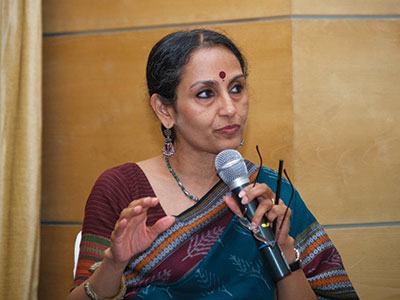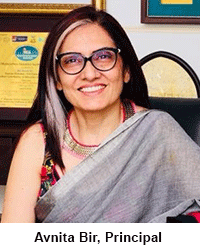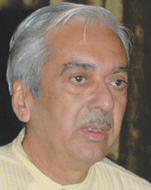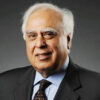Continuous Comprehensive Evaluation Confusion
Four years after the Continuous and Comprehensive Evaluation schema was adopted with surprising alacrity by the Central Board of Secondary Education and introduced in all 14,358 CBSE-affiliated schools, the CCE experiment is floundering in a sea of confusion with school principals and teachers struggling to switch from the traditional examination system. Summiya Yasmeen reports
Although on the surface all seems calm and business as usual within India’s 1.40 million primary-secondary schools (routine tragedies such as the poisoned mid-day meal horror in Bihar which snuffed out the lives of 23 children, cruel and unusual corporal punishment, child murder, suicides etc are quickly forgotten), the four years past have been a period of great upheaval in school education countrywide.
The historic Right to Free & Compulsory Education (RTE) Act, 2009, over a decade in the works, became law on April 1, 2010; the world’s largest school mid-day meal programme covering 120 million children is operational; the GER (gross enrolment ratio) in primary education is above 98 percent for boys and girls. And perhaps for the first time since independence, pedagogy and learning outcomes in K-12 education are receiving government and academic attention.
In July 2009, former Union human resource development (HRD) minister Kapil Sibal, fresh from the Congress-led UPA-II coalition’s triumphant return to power at the Centre for a second consecutive term, announced a slew of reforms in school education to reduce examination stress and associated anxiety. These reforms were quickly adopted by the HRD ministry-affiliated Central Board of Secondary Education (CBSE) — the largest pan-India school leaving examinations board with 14,358 of the country’s top-ranked private and government primary-secondaries affiliated with it. These liberal initiatives made the class X board exam optional and introduced a new assessment schema — the Continuous and Comprehensive Evaluation (CCE) system — to replace the ‘sudden death’ examination which assessed students’ capabilities in a final exam.
Since then, while Sibal has migrated to the Union telecom ministry, the managements, principals and teachers of the 14,000-plus CBSE schools, comprising a mix of private sector and Central government-owned (Kendriya Vidyalaya and Jawahar Navodaya Vidyalaya) institutions with an aggregate enrolment of 12 million students, have silently been grappling with implementing the ill-considered exam-ination reforms mandated by the former HRD minister and readily-compliant CBSE.
Educationists and academics monitoring the country’s glacial education scene are surprised — even astonished — by the alacrity with which the ‘autonomous’ CBSE responded to Sibal’s proposal to introduce CCE. In July-August focus groups comprising parents, teachers, principals and students were hurriedly heard and CCE was “introduced” in all affiliated schools from class I-X through a circular dated September 20, 2009. Four years on, the CCE experiment is floundering in a sea of confusion with school principals and teachers — who were neither consulted nor adequately trained — struggling to switch from the traditional exam system to a radically new form of assessment and evaluation, under which students are continuously appraised through non-stressful progress evaluation methodologies.
Typically, neither Union HRD minister Dr. Pallam Raju nor CBSE chairman Vineet Joshi feel it incumbent upon themselves to explain this sea-change in learning outcomes evaluation methodology to EducationWorld, the country’s #1 education news and analysis publication. Numerous letters, emails and telephone calls requesting interview are routinely ignored. Shortly after assuming his new office in October 2012, Raju magnanimously granted your editor an interview, only to cancel at the last minute, inflicting financial loss on the publication (unrefunded airfare).
But even as the HRD ministry and CBSE — the prime movers — maintain a stony silence (or grant interviews to non-specialist journalists), education corporates and NGOs have investigated the social costs of hasty — perhaps even reckless — implementation of CCE in 14,358 schools affiliated with CBSE which as the country’s largest pan-India examination board, is a role model to 33 state boards.
For instance, on May 13 the Gurgaon-based The Curriculum Company (TLC) released the conclusions of a survey which inter-viewed 1,482 teachers and 18 principals in 100 schools across four cities (Delhi, Chandigarh, Pune and Chennai) to assess on-the-ground impact of CCE. According to the TLC report titled Khoj (‘search’), there are severe implementation lacunae in CCE. Field researchers who conducted the interviews report that a majority of teachers are “not comfortable with the tools of daily evaluation and assessment”; training is inadequate; and more than 50 percent of teachers failed to attend the few training sessions conducted. Teachers complain that their workload has increased considerably leaving them no time to foster creativity in classrooms (see box).
“The objective of Khoj was to evaluate the impact of CCE and suggest solutions. The survey indicates there are severe gaps in the implementation of CCE at all levels — starting from teacher orientation, training, to actual implementation in the classroom. Most teachers surveyed say the training given was insufficient and they are not confident about using the new assessment rubrics. After the introduction of CCE, teachers in CBSE schools are spending 29-30 percent more time on daily assessments and paper work as they are obliged to maintain detailed records for each student. Consequently, they have less time to innovate and improve actual teaching in the classroom. Moreover, high teacher-pupil ratios in most schools have made the teacher’s job very difficult. The result is that the prime objective of CCE — to identify each student’s learning needs and address them effectively — is not being achieved. Unfortunately an excellent and well-researched evaluation system which discourages rote learning and encourages holistic development of students has been derailed, because of failure to provide proper support and training to teachers,” says Ujwal Singh, an alumnus of IIM-Bangalore, who worked with several blue-chip corporates including TCS, NIIT and Hughes Communications prior to promoting The Curriculum Company last year. Currently 50 schools countrywide are using the company’s Thinking Classrooms curriculum.
That CCE is a pedagogically sound student assessment system which evaluates each student’s academic and extra-curricular attainments is self evident. The centre piece of CBSE’s exam reforms, it’s a vast improvement over the conventional exam-centric evaluation system. Under CCE, every student’s performance is appraised continuously through formative assessment (FA with 40 percent weightage) and summative assessment (SA, 60 percent). FA is based on informal tests, assignments, project work, group activity etc and covers academic subjects as well as life skills such as creative and critical thinking, and decision-making with weightage also given to extra-curricular activities. Teachers are given the discretion to enhance academic grades of students who have performed well in non-scholastic activities.
On the other hand, SA is conducted on the basis of students’ performance in written first term and final exams with weightages of 20 and 40 percent respectively. The first term exam is conducted by schools themselves with students given the option to choose between writing the class X final exam conducted by CBSE or the school.
Given the option to write internally or externally conducted exams, 67 percent of the 1 million class X CBSE students opt to write the final exam conducted by their schools. But irrespective of whether students write the final summative exam conducted by the school or board, all students are awarded a common CBSE-certified report card running into six pages, detailing performance (grades instead of marks are awarded, for instance Grade A1 corresponds to 91-100 marks) in academics and a range of non-scholastic activities. The report card studiously avoids disclosing whether the student has written the internal school or board-conducted final exam.
 “CCE is a great idea and a much-needed educational reform. Implemented in ideal conditions, it is student centric — facilitating diagnosis of every student’s learning needs and develop-ment of teaching-learning strategies to enhance academic performance. It also encourages co-curricular and extra-curricular education. CCE offers schools a great opportunity to eliminate rote learning and swotting for exams. But this pedagogic system is not easy to implement and requires extensive teacher training and support. Yet with teachers preoccupied with assessment rather than diagnosis and redressal of student learning needs, CCE has become all about clerical recording of information in daily assessment sheets rather than helping children set and achieve higher standards. Rigorous and continuous teacher training is the precondition of effectively implementing CCE in spirit and practice. Otherwise there will be dilution of standards and massive marks inflation,” says Maya Menon, founder director of The Teacher Foundation, a Bangalore-based teachers training organisation empanelled by CBSE to conduct CCE teacher training workshops.
“CCE is a great idea and a much-needed educational reform. Implemented in ideal conditions, it is student centric — facilitating diagnosis of every student’s learning needs and develop-ment of teaching-learning strategies to enhance academic performance. It also encourages co-curricular and extra-curricular education. CCE offers schools a great opportunity to eliminate rote learning and swotting for exams. But this pedagogic system is not easy to implement and requires extensive teacher training and support. Yet with teachers preoccupied with assessment rather than diagnosis and redressal of student learning needs, CCE has become all about clerical recording of information in daily assessment sheets rather than helping children set and achieve higher standards. Rigorous and continuous teacher training is the precondition of effectively implementing CCE in spirit and practice. Otherwise there will be dilution of standards and massive marks inflation,” says Maya Menon, founder director of The Teacher Foundation, a Bangalore-based teachers training organisation empanelled by CBSE to conduct CCE teacher training workshops.
Menon’s fears about dumbed down education and grades inflation are already a reality. Since implementation of CCE in CBSE schools countrywide, there’s been a steady increase in the number of students clearing the class X board examination, and an unprecedented rise in the number of 90-plus percenters. In the very first year of CCE in 2011, the percentage of students passing CBSE’s class X exam rose to 98.6 percent (cf. 91.1 percent in 2010), with the number of students averaging 90 percent-plus recording an all-time high. Of the 1 million students countrywide certified by CBSE in 2011, 3.8 percent (38,377) scored a perfect cumulative grade point average (CGPA) of 10 (91-100 percent). Assessment liberalisation has clearly set in. The national pass percentage in the CBSE class X exam of 2012 rose to 98.19 percent and 98.94 percent this year.
School principals EducationWorld correspondents interviewed readily admit that with schools given full freedom and authority to assess students’ performance, school managements and teachers are assessing and evaluating their class X students too liberally. Moreover, apprehensive about being accused of favouritism or being too strict, teachers tend to err on the side of generosity in CCE’s formative and summative assessment examinations. Though CBSE has mandated that all schools maintain “evidence of assessment” in either of the two school terms for random checking by board officials to ascertain fair and unbiased evaluation, instances of teachers being pulled up are rare.
“Yes, CCE has prompted grades inflation. In many schools marks are given liberally or tests made simple to boost institutional reputation. Also after the introduction of CCE, academic syllabuses have been diluted especially for science subjects, and standards have fallen. However, CCE is student-friendly and can be a very effective system of assessment if implemented properly,” says Shoba Raman, vice principal of the CBSE-affiliated Vidya Mandir Senior Secondary School, Chennai, who also admits that teachers’ paperwork has increased dramatically after the introduction of CCE in 2010.
Dramatic increase in record keeping and documentation duties is a common lament of teachers of CBSE schools countrywide. Under CCE’s formative assessment which covers evaluation of non-scholastic attainments, teachers have to maintain assessment sheets on each student’s co-curricular and extra-curricular activities as well as records in the form of anecdotes or achievements for proof of life skills, team work and attitudes towards teachers and peers.
“We have to maintain a box file on every student and note down performance in non-scholastic activities on a daily basis. This is in addition to formative assessments we have to do for academic subjects. There are 50 students in my class and keeping a daily record for each one is very cumbersome. I don’t get any time to prepare for lessons, and it’s become routine to take work home which is adversely affecting my family life,” says a teacher of a CBSE school in Bangalore who preferred to remain anonymous.
With the increase in teachers’ workload here to stay and emerging as a serious problem, a growing number of school managements are using technology to reduce the load of records-keeping. For instance, the Rashtriya Military School, Bangalore, a class VI-XII residential school run by the Union ministry of defence, has developed customised software to help teachers document and generate reports.
“From the beginning, we opted to use technology to help teachers cope with CCE requirements. Our teachers worked with an IT company to develop customised software which enables us not only to store assessment data electronically but also helps generate and sort students’ progress reports. Moreover, all our classrooms are equipped with interactive white boards which teachers use to deliver lessons. Intelligent use of technology can help teachers reduce their paperwork significantly,” says Lt. Col. Bhupendra Kumar, principal of Rashtriya Military School, which has 374 students instructed by 18 teachers on its muster roll.
Ujwal Singh (quoted earlier), founder CEO of The Curriculum Company, endorses this solution to the problem of excessive documentation posed by CCE. “Digital solutions can help teachers minimise paperwork. We are in the final stages of launching T-Learning — a tablet-based classroom manage-ment platform — which will facilitate student assessment and data analysis,” he promises.
While there’s no denying that CCE has expanded teachers’ roles and responsibilities, the benefits this learning outcomes assessment pedagogy confers upon students are manifold. In particular, its focus on developing non-scholastic capabilities hitherto ignored and marginalised in an academics and exams-obsessed system, was long overdue. For the first time in the history of Indian school education, CBSE has detailed an exhaustive list of non-scholastic areas including life skills, attitudes and values, outdoor educa-tion, performing arts, creative and literary pursuits, etc for which students should be rewarded.
 “CCE is an excellent examination system which encourages the develop-ment of well-rounded students by rewarding their extra-curricular achievements and academic performance. Under this system, an academic topper needs to also develop life skills and find time to participate in extra-curricular activities. Initially parents of academic high achievers resented this, but their mindset is changing. On the other hand students who weren’t very academically inclined are faring much better because of the 360 degree assessment that CCE mandates. Nurturing balanced individuals prepared for both work and life, is welcome,” says Avnita Bir, principal of the CBSE-affiliated R.N. Podar School, Mumbai.
“CCE is an excellent examination system which encourages the develop-ment of well-rounded students by rewarding their extra-curricular achievements and academic performance. Under this system, an academic topper needs to also develop life skills and find time to participate in extra-curricular activities. Initially parents of academic high achievers resented this, but their mindset is changing. On the other hand students who weren’t very academically inclined are faring much better because of the 360 degree assessment that CCE mandates. Nurturing balanced individuals prepared for both work and life, is welcome,” says Avnita Bir, principal of the CBSE-affiliated R.N. Podar School, Mumbai.
Likewise Anita Malhotra, mother of Archita, a class X student of RN Podar School, also welcomes CCE. “I’ve noticed a great difference in Archita. The emphasis on developing holistically in school has helped her gain self-confidence and reduced the pressure of exams. Continuous evaluation has abolished fear of the class X board exam. In fact she doesn’t even feel the need for after-school tuition or coaching,” says Malhotra.
In this context, it’s pertinent to note that CBSE has mandated all affiliated schools to implement CCE from class I onwards. A mountain of manuals and training material has been produced by CBSE to enable across the board implementation of CCE. According to Taruna Vashisht, principal of the junior school (pre-nursery to class V) of Bhavan Vidyalaya, Chandigarh, this facilitates comfort with the continuous evaluation system, within the teacher and student communities. “Implem-enting CCE from class I ensures that students and teachers become accustomed to this assessment process. I’m glad the CBSE management has understood that for this radically new assessment system to succeed and achieve its objectives, the groundwork has to begin in primary school,” says Vashisht.
Within the academic and parents’ communities there is a general consensus that the CBSE top brass has done well to break with the past ‘sudden death’ examination system and replace it with CCE. However there’s also considerable disquiet about the speed with which the country’s premier pace-setting examination board has imposed the radically new system upon its 14,358 affiliated and top-ranked schools educating 12 million of India’s most promising students.
The major criticism is that teachers in affiliated schools haven’t been prepared and adequately trained to deliver the new examination system. According to the Khoj study, CCE teacher training sessions being conducted currently are inadequate, with a maximum of five training workshops per year. Dr. Anindita Chatterjee, principal of the CBSE-affiliated Bhavan’s Gangabux Kanoria Vidyamandir, Kolkata which nurtures 3,602 students instructed by 140 teachers, supports this criticism. “CCE workshops for teachers in all subjects need to increase. While schools in urban areas are better equipped to implement this student-friendly system, rural schools are finding it very difficult to understand and execute it,” she says.
However Vineet Joshi, the elusive chairman of CBSE, believes the inevitable teething pains of this revolutionary new assessment system are over. In support he cites the example of the first cohort of class X students assessed under the CCE system who wrote their traditional class XII CBSE board exam in March, and have come out with flying colours. According to a CBSE official statement, the class XII national pass percentage in 2013 is 82.10 percent, up from last year’s 80.19 percent with the number of students averaging over 95 percent at 7,231, 62 percent higher than in 2012.
“The difference in standards of schools, roadblocks in communication with stakeholders and diversity of socio-economic backgrounds has been the biggest challenge (in implementing CCE). There are CBSE schools in remote areas in the Northeast, institutions run by the government and privately-run schools. Earning the confidence of teachers in order to introduce the CCE framework has been tough. Today we can say the success of CCE is because of the constant feedback the board has sought and worked on simultaneously. We established an online system for collecting data of the six annual assessments as well as 12 assessments in co-scholastic areas. There is always some amount of apprehension. We surveyed the class XI half-yearly performances for the first batch that missed the class X boards. Only then were we assured they will do well and they did,” said Joshi in an interview with Times of India(May 31, 2013).
Despite Joshi’s optimism if not satisfaction, privately CBSE officials admit the implementation of CCE in the board’s affiliated schools is far from satisfactory. For instance, in the first-ever internal study (2013) of proof of assessments submitted by schools, CBSE found only 31.57 percent of schools following CCE “in letter and spirit”. The board had asked 5,000 randomly selected schools to show the evidence of assessments they made for the first term of the 2012-13 academic year. After examining the evidence for over a month, CBSE found most schools had turned the formative assessment under which teachers are advised to evaluate student performance through assessment of project work and practicals rather than paper-pencil tests, into just ‘another test’. While 31.57 percent of schools were categorised as ‘good’ for having successfully implemented CCE, nearly half were rated ‘average’. According to the feedback report prepared by the board, 18.28 percent of schools needed to radically improve existing CCE practices.
Meanwhile even as CBSE schools are struggling to replace traditional term and final exams with CCE, a majority of the country’s 28 state governments — all of whom have their own school-leaving exam boards — are set to follow in the footsteps of the nation’s premier school examination board by adopting CCE.
The state governments of Maharashtra, Karnataka, Tamil Nadu, and Punjab introduced CCE in classes I-VIII last year. More state governments are expected to do so in the recently commenced academic year. Notwith-standing the reality of poor quality teachers, overcrowded classrooms, obsolete teacher training curriculums and acute shortage of teachers, the decks are being cleared to introduce CCE in India’s 1.2 million government primary schools.
 Comments J.S. Rajput, the Delhi-based former chairman of National Council of Teacher Education (NCTE) and National Council of Educational Research and Training (NCERT): “CCE is a pedagogically sound system and we all knew about it even before the advent of (former Union HRD minister) Kapil Sibal. His interest was publicity and the sudden implementation of CCE was shocking given the conditions of deprivation and deficiency that prevail in 70 percent of schools in the country. CCE just cannot be implemented with over 1 million posts of teachers being vacant. It has no meaning for untrained, under qualified and ill-paid teachers. Why only CCE, even implementation of the RTE Act has been a disaster.”
Comments J.S. Rajput, the Delhi-based former chairman of National Council of Teacher Education (NCTE) and National Council of Educational Research and Training (NCERT): “CCE is a pedagogically sound system and we all knew about it even before the advent of (former Union HRD minister) Kapil Sibal. His interest was publicity and the sudden implementation of CCE was shocking given the conditions of deprivation and deficiency that prevail in 70 percent of schools in the country. CCE just cannot be implemented with over 1 million posts of teachers being vacant. It has no meaning for untrained, under qualified and ill-paid teachers. Why only CCE, even implementation of the RTE Act has been a disaster.”
Four years after the student-friendly CCE was hastily imposed, the time is right for the CBSE management to introspect, reassess and initiate mid-course corrections. “To achieve the laudable objectives of CCE and implement it in the right spirit, CBSE must first prescribe social, cognitive and emotional norms for all classes. The absence of standards and benchmarks has made teacher subjectivity rampant. Second, it must address resistance to CCE from teachers by providing them adequate training and support. And lastly, monitoring and supervision of CCE has to become tighter. Currently, schools are implementing a diluted version. It’s time to take corrective measures and initiate true reform,” says Dr. A.S. Seetharamu, former professor of education at the Institute of Social and Economic Change, Bangalore and currently education advisor to the Karnataka government.
The HRD ministry and CBSE’s floundering CCE experiment demonstrates that root and branch reform of Indian education is imperative for pedagogy and exam reforms to succeed. Addressing the realities of teacher shortages, high teacher-pupil ratios, obsolete teacher training curriculums, crumbling infrastructure, and insufficient budgetary allocations (India spends a mere 3.5 percent of GDP on education), are preconditions for success. This is a long and hard road requiring more than quick-fix solutions.
Four years on, India’s premier board must take the lead in addressing and ironing out inconsistencies in the implementation of CCE — an overdue child-friendly examination reform initiative. The future of 220 million school-going children depends on it.
With Autar Nehru (Delhi); Sunayana Nair (Mumbai); Hemalatha Raghupathi (Chennai) & Baishali Mukherjee (Kolkata)
Also read: CBSE launches AI platform for students

















Add comment